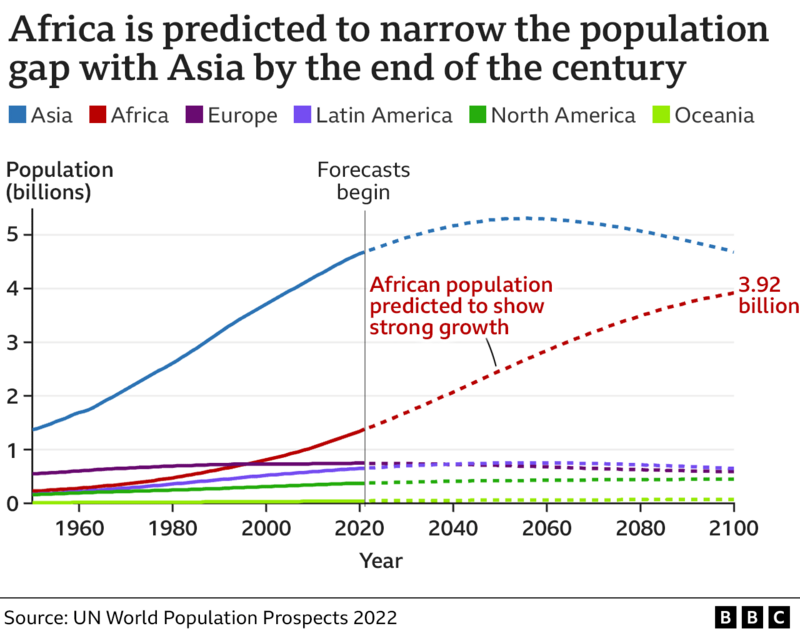The first thing to understand about the so-called demographic timebomb facing countries like the UK and US is to avoid calling it that. While birth rates continue to decline in both nations, the term “timebomb” is disliked by demographers, who specialize in studying population changes.
“First and foremost, I hate the phrase,” says Sarah Harper, a professor of gerontology at the University of Oxford. “I don’t believe there is a demographic timebomb; it’s part of the demographic transition. We knew this would happen and that it would occur throughout the 21st century. So, it’s not unexpected, and we should have been preparing for this for some time.”
However, the future challenge is significant. To increase or maintain its population, a developed country needs an average birth rate of 2.1 children per woman, known as the “replacement rate.”

The latest data for England and Wales indicate that the average birth rate, or total fertility rate, dropped to 1.49 children per woman in 2022, down from 1.55 in 2021. This decline has been ongoing since 2010. Scotland and Northern Ireland, which record their data separately, show similar trends.
In the US, the fertility rate hit a record low of 1.62 last year, a significant drop from 3.65 in 1960. Prof. Harper notes that two-thirds of the world’s countries now have birth rates below the replacement rate, with Japan, China, and South Korea having particularly low rates.
Population growth is now primarily confined to sub-Saharan Africa. The concern over declining birth rates stems from the significant economic challenges they pose, including aging populations, shrinking workforces, and the financial strain on pension systems. Economists worry about where economic growth will come from if companies can’t recruit enough workers, and how a smaller workforce can support a larger retired population.
To boost birth rates, countries can make it easier for women to have children by offering generous childcare provisions, tax breaks, extended fully-paid maternity leave, flexible working hours, and workplace creches. However, these policies may slow the decline but rarely reverse it. Educated women often prefer not to compromise their earnings and career prospects by having children, leading to fewer children or none at all.
There are two main strategies to address falling birth rates: keeping the population healthier and employed longer, or large-scale immigration. Singapore, one of the fastest-aging countries, is focusing on the first option. Prof. Angelique Chan, executive director of Singapore’s Centre for Ageing Research & Education, explains that efforts are being made to raise the retirement age, offer mid-life training, and encourage companies to re-employ older workers up to the age of 69.
Currently, Singapore’s retirement age is 63, but it will increase to 64 in 2026 and to 65 by 2030. By then, the age for re-employment is expected to rise to 70.
Prof. Chan states that the Singaporean government is enhancing efforts to ensure every citizen has a doctor who monitors their health and ensures they remain fit to continue working. She adds that Singapore is investing heavily to maintain a healthy population, allowing people to work into their old age.
In the US, Ronald Lee, emeritus professor of economics at the University of California, observes that more elderly Americans need to work to cover their living expenses. He notes that the proportion of consumption for Americans aged 65 and older funded by continued work is much higher than in other developed countries.
Prof. Lee views this trend positively, suggesting that the world should move past the idea that older people deserve an indefinitely long retirement. He emphasizes that people are now healthier, more vigorous, cognitively sharper, and capable of working longer than in the past. He hopes to see retirement ages extend well into the 70s.
Currently, Americans can receive full social security benefits starting at 66 years and two months, but this age will gradually increase to 67.

Prof. Lee’s perspective may not be popular, but economically it seems inevitable. As life expectancy increases, funding longer retirements becomes increasingly difficult. Extending working years is the obvious solution.
However, there’s another solution, as Prof. Harper suggests—increased immigration. This topic is highly controversial on both sides of the Atlantic. “From a demographic perspective, migration could easily address the problem of lower birth rates,” she says. “There are political and policy challenges, but demographically, we should allow countries with high birth rates and ample workers for the next several decades to fill the gaps worldwide.”
We know there are significant pressures against large-scale immigration, though even populist governments often overlook it when necessary. Elizabeth Kuiper, associate director of the European Policy Centre think tank, points to Hungary as an example. While its government claims a zero-tolerance stance on migrants, “we know that these countries have developed unspoken strategies for selective migration in sectors like care and healthcare.”
The issue is that in most developed countries, immigration levels are far from sufficient to counterbalance an aging population, yet it remains deeply unpopular. Demographic experts understand that countries will need to extend working years or increase immigration, likely both. Achieving this requires political consensus, but politicians recognize that advocating for more immigration and longer working lives is not a vote-winner.
